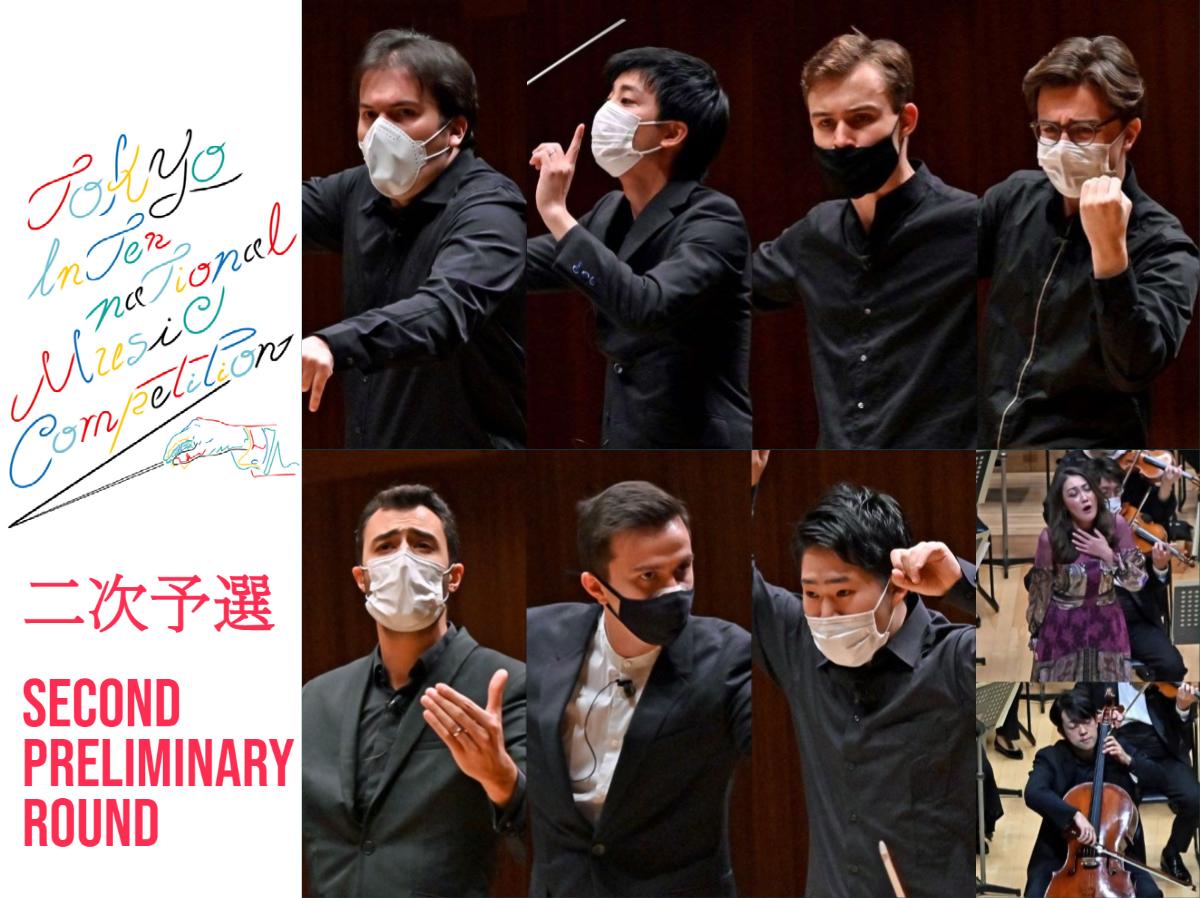NEWS

Report on the Second Preliminary Round
Report on the Second Preliminary Round
From the day following the first preliminary round, the second preliminary round took place for two days, again without spectators considering the COVID-19 pandemic situation.
Jose Soares (Brazil), Koji Ishizaka (Japan), Bertie Baigent (UK) and Luka Hauser (Germany) appeared on Sep. 29, and Samy Rachid (France), Mikhail Mering (Russia) and Satoshi Yoneda (Japan) on 30.
All of them performed Symphony No. 4 by Tchaikovsky and Three Symphonic Movements by Akira Miyoshi in the first half of the round. After a break they worked with soloists for In quali eccessi, o Numi and Mi tradi quell’alma ingrata: opera Don Giovanni, and the Variations on a Rococo Theme by Tchaikovsky.
The contestants were given 25 minutes each for the first and second half of the round to conduct designated sections in the four assigned pieces. Just as in the first preliminary round, they wore a microphone while they gave instructions to the orchestra and redo a same part to do it better; as though they were rehearsing with the orchestra.
Tokyo Philharmonic Orchestra (with Akihiro Miura as concertmaster) performed as they did in the first preliminary round. The soloists were Akiko Sato (soprano) and Gen Yokosaka (cello). Except for Sato and wind players everyone else on stage wore a facial mask. TPO adapted so well to each of the contestants. It was clear that they tried to represent faithfully the conductors’ intentions. The soloists Sato and Yokosaka gave high quality of performance. The stable performance of the orchestra and the soloists supported the contestants to exhibit their competence.
Comments on the contestants who passed the second preliminary round
TEXT BY Kyoko MICHISHITA (Music critic)
Out of seven contestants who participated in the second preliminary round four of them were selected as finalists. They challenged a large repertoire of music in the second preliminary round such as a symphony, contemporary music, opera and concerto so as to show their adaptability as conductors.
Let’s look back on the finalists’ performances in the order of their appearance at the second preliminary round.
Jose Soares from Brazil, age 23, the youngest among the contestants, looked a little tense at the beginning of Symphony No.4 of Tchaikovsky. With the amplitude of sound intensity not so large, the entire music presented light touch and bright tone, bringing about a drive in the flow of the music. Instructions with singing and the way he created a unique rhythm in the second movement of Miyoshi’s Three Symphonic Movements were impressive.
Bertie Baigent from the UK, age 26, who has been steadily developing his career as a guest conductor with the Orchestra Teatro Regio Torino and assistant conductor of the Colorado Symphony, showed consistently stable performance. In the performance of Symphony No. 4 its lyrical characteristics were naturally conveyed. His fine conducting brought about beautiful resonance among various musical instruments in Miyoshi’s piece. Nuance-filled expression and bold changes in tempo so well presented the ever-changing scenes in Don Giovanni’s aria by Mozart. He was eager to create music until the last minute by giving instructions to soprano and cello soloists.
Samy Rachid from France, age 28, who was a successful cellist as a first prize winner in the ARD International Music Competition Munich as part of the string quartet, finely expressed various sound elements since the beginning part of the Symphony No. 4, creating deep texture of the music. Substantial contrast was presented between the first and second movements in Miyoshi’s piece, perceptively indicating the melodies and motive of the second movement, with vivid rhythm expression. It was a sophisticated performance. He finished his time by just running through Tchaikovsky’s Variations on a Rococo Theme, but with a natural conversation with the cellist, thus expressing the elegant and cheerful concept of the music.
Satoshi Yoneda, a 25-year-old Japanese who studied at Tokyo University of the Arts, clearly showed his positive attitude to conduct and create music. After a first round of performance, he gave the orchestra verbal instructions one after another, and then dynamics were created and we could see substantial changes in the performance. In Symphony No. 4, for example, after his directions about lengthening some notes and so on, the performance became more expressive.
Video
Our YouTube Channel
https://www.youtube.com/channel/UCkd1kHNHJsIdOWQnQFBvYtQ





